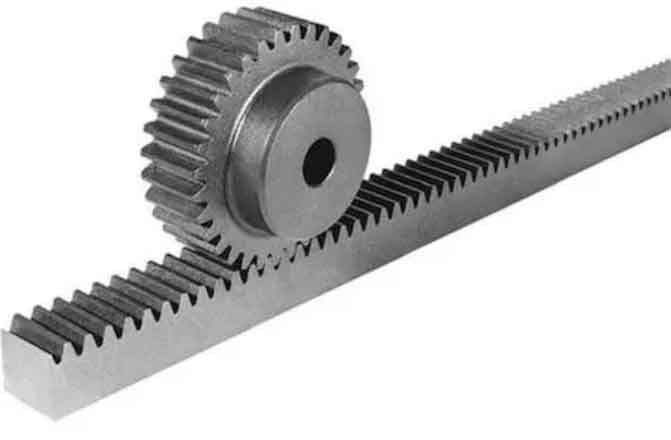
Rack and pinion gear technology plays a crucial role in enabling efficient energy conversion in various applications. The unique design and characteristics of rack and pinion gears allow for effective power transmission and energy conversion, resulting in optimized performance and energy efficiency. Let’s explore how rack and pinion gear technology enables efficient energy conversion:
1. Mechanical Advantage:
Rack and pinion gear systems provide a mechanical advantage that allows for efficient energy conversion. The gear ratio of the system determines the relationship between the rotational motion of the pinion gear and the linear motion of the rack. By selecting an appropriate gear ratio, the system can multiply or reduce the applied torque, enabling efficient power transmission and energy conversion to suit the specific requirements of the application.
2. Direct Power Transmission:
Rack and pinion gear systems offer direct power transmission, which minimizes energy loss and enhances efficiency. The teeth of the pinion gear directly engage with the teeth of the rack, ensuring a positive and immediate transfer of rotational motion into linear motion. This direct contact eliminates the need for intermediate components and reduces friction, resulting in efficient power transmission and energy conversion.
3. Effective Load Distribution:
Rack and pinion gear systems facilitate effective load distribution, which helps optimize energy conversion. The tooth engagement between the rack and pinion distributes the load evenly across the gear teeth, minimizing stress concentrations and ensuring efficient utilization of power. This load distribution minimizes energy losses due to excessive wear or localized stress, enhancing the overall energy efficiency of the system.
4. Precision and Accuracy:
Rack and pinion gear systems offer precise motion control and accurate positioning, contributing to efficient energy conversion. The direct tooth engagement and low backlash in rack and pinion gears enable precise linear motion and accurate positioning of the output component. This precision ensures that energy is efficiently converted into the desired motion without wasteful movements or inaccuracies, resulting in improved overall energy efficiency.
5. Energy Recovery and Regeneration:
In certain applications, rack and pinion gear systems can facilitate energy recovery and regeneration. For example, in rack and pinion steering systems, energy can be recovered during deceleration or braking. By employing appropriate mechanisms, the energy generated during these processes can be stored or redirected for future use, optimizing energy efficiency and reducing overall energy consumption.
6. Lubrication and Efficiency Enhancement:
Proper lubrication in rack and pinion gear systems improves their efficiency and energy conversion capabilities. High-quality lubricants reduce friction and wear, minimizing energy losses due to internal resistance. The selection of suitable lubricants and maintenance practices can enhance the overall efficiency of the system, ensuring optimal energy conversion and reducing energy wastage.
7. Durability and Longevity:
Rack and pinion gear systems are known for their durability and longevity, which contribute to efficient energy conversion over the lifespan of the system. The robust construction and proper maintenance of rack and pinion gears ensure consistent performance and minimize the need for repairs or replacements. This durability translates into long-term efficiency and reliability, optimizing energy conversion throughout the system’s operational life.
Rack and pinion gear technology plays a vital role in enabling efficient energy conversion by offering mechanical advantage, direct power transmission, effective load distribution, precision, accuracy, energy recovery, and durability. These features make rack and pinion gear systems well-suited for applications where energy efficiency is critical, such as automotive steering systems, robotics, machine tools, and various industrial machinery. By utilizing rack and pinion gear technology, energy can be effectively converted, leading to improved performance, reduced energy consumption, and overall energy efficiency gains.
